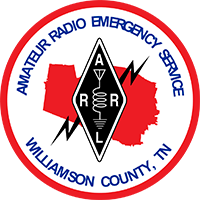This is the greatest development in years! It is easy to get started. And there are many RMS sites, VHF and UHF, in our immediate area. This mode should be a mainstay for us, especially in emergencies when the internet may be down. Best source of information: http://www.winlink.org/
Additional information (from K4IDK):
Anyone wishing to check-in using Winlink is encouraged to do so when not available at 7PM for the regular net. All you have to do is send me, K4IDK, an email using Winlink by way of any RF mode (packet, winmor, pactor). When doing so, include your power source and the mode that you used when checking in. I will acknowledge receipt of your check-in at some point during the day as I’ll be signing in periodically to check for email, and following the repeater net I will send out an email on Winlink with any/all announcements. This way you will be able to check-in at a time convenient for you and still get any information that was given out during the regular net. The only catch is that you must use an RF mode, meaning that Telnet will not count as a check-in, and you must check-in prior to 6:30 PM so that we will have time to get the roster set for net control.
If you are still learning about Winlink, then please feel free to send me an email via Winlink using Telnet as a training tool and I’ll be more than happy to send you a reply while you gain proficiency in the use of RMS Express. Phil, W4PHS, has an excellent paper that he’s written and kept up to date on Winlink at QRZ.com. You can download it and read through it at your leisure. Getting involved in using Winlink using an RF mode is not difficult or expensive, costing about $100 or so for a basic 1200 baud modem for VHF, such as a Tiny Trak 4, or a TigerTronics Signalink sound card for use with winmor when using HF. The same sound card is useful for other modes as well, such as PSK-31 or RTTY. If I can do it, you can as well, as I’m far from a computer guru. Winlink provides us, as an ARES group, the ability to send message traffic in real time devoid of any errors that can occur when passing traffic from station to station using voice and is therefore critically important in emergency communications.
